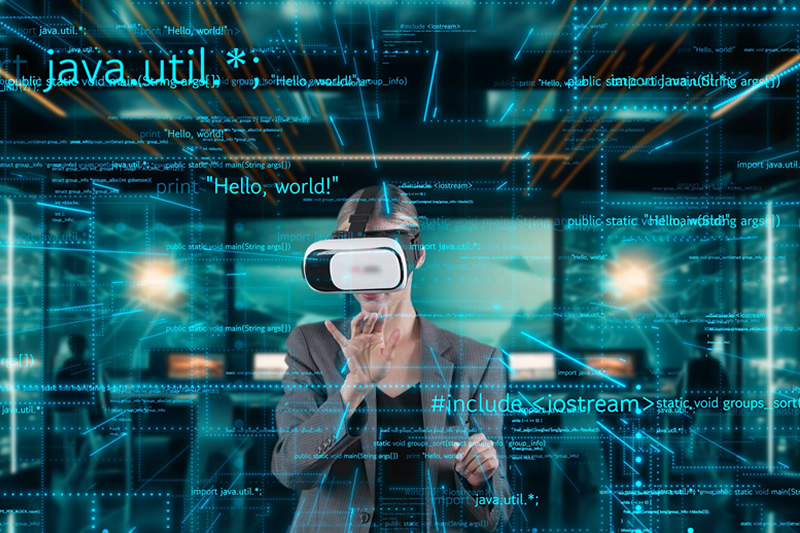The global eLearning market has been growing at an unprecedented rate, with predictions estimating it will reach $375 billion by 2026. This rapid expansion is fueled by technological advancements, increasing internet penetration, and a rising demand for accessible, flexible education. As eLearning spreads across borders, the importance of effective translation cannot be overstated. The future of eLearning translation is set to be shaped by emerging trends and technologies that promise to enhance the learning experience for a diverse, global audience. This article explores the key trends and technologies poised to revolutionize eLearning translation.
Key Trends in eLearning Translation
1. Personalization and Adaptive Learning
Personalization is becoming a cornerstone of modern eLearning. By tailoring content to individual learners’ needs, preferences, and learning styles, educational platforms can enhance engagement and retention. In translation, this trend is leading to the development of adaptive learning systems that can dynamically adjust content based on the learner’s linguistic and cultural context.
2. Mobile Learning
With the proliferation of smartphones and tablets, mobile learning (mLearning) is gaining traction. This shift necessitates translation solutions that are not only linguistically accurate but also optimized for mobile interfaces. Contextual translation, which considers the limited screen space and interactive nature of mobile devices, is becoming increasingly important.
3. Microlearning
Microlearning involves delivering educational content in small, manageable chunks, often through videos, quizzes, or interactive modules. Translating microlearning content requires a nuanced approach, as the brevity and focus of these modules demand high precision and cultural relevance in translation.
4. Gamification
Gamification, the integration of game-like elements into learning experiences, is another trend shaping eLearning. Effective translation of gamified content involves not just linguistic accuracy but also an understanding of cultural nuances and gaming conventions in different regions.
Emerging Technologies in eLearning Translation
1. Artificial Intelligence (AI) and Machine Learning
AI and machine learning are revolutionizing the translation industry. Machine translation (MT) systems, powered by neural networks, are becoming increasingly sophisticated, capable of producing translations that are not only accurate but also contextually appropriate. AI-driven tools can analyze vast amounts of data to identify and learn from patterns, continually improving translation quality.
a. Neural Machine Translation (NMT)
Neural Machine Translation represents a significant leap forward from traditional statistical methods. NMT systems can consider entire sentences or paragraphs at once, leading to more coherent and contextually accurate translations. As these systems continue to evolve, their ability to handle complex educational content will improve, making high-quality translation more accessible and affordable.
b. AI-Powered Language Learning Assistants
AI-powered language learning assistants, like chatbots and virtual tutors, are being integrated into eLearning platforms. These assistants can provide real-time translation support, answer learner queries, and offer personalized feedback, enhancing the overall learning experience.
2. Natural Language Processing (NLP)
Natural Language Processing, a branch of AI that focuses on the interaction between computers and human language, is playing a pivotal role in eLearning translation. NLP technologies can analyze and understand the nuances of human language, enabling more accurate and context-sensitive translations.
a. Sentiment Analysis
Sentiment analysis, an application of NLP, can be used to gauge the emotional tone of educational content. This technology can ensure that translations not only convey the correct information but also preserve the intended emotional impact, which is crucial for maintaining learner engagement.
b. Speech Recognition and Synthesis
Speech recognition and synthesis technologies are enhancing the accessibility of eLearning content. By converting spoken language into text and vice versa, these technologies enable real-time translation and support for audio and video content, making learning materials more accessible to non-native speakers.
3. Augmented Reality (AR) and Virtual Reality (VR)
AR and VR are transforming the way educational content is delivered, offering immersive and interactive learning experiences. Translating AR and VR content presents unique challenges, as it requires not only linguistic accuracy but also the integration of translations into virtual environments.
a. AR Translation Apps
AR translation apps can overlay translated text onto real-world objects, providing instant translations in a learner’s native language. These apps are particularly useful in language learning and can enhance the educational experience by providing contextual translations in real-time.
b. VR-Based Language Immersion
VR offers unparalleled opportunities for language immersion, allowing learners to practice their language skills in realistic, interactive environments. Translating VR content involves creating culturally appropriate and contextually accurate translations that maintain the immersive nature of the experience.
4. Blockchain Technology
Blockchain technology, known for its role in secure, transparent transactions, is finding applications in eLearning translation. By providing a decentralized and tamper-proof ledger, blockchain can ensure the integrity and authenticity of translated content.
a. Decentralized Translation Platforms
Decentralized translation platforms leverage blockchain to connect translators and clients directly, reducing costs and increasing transparency. These platforms can ensure that translations meet high standards of quality and accuracy, as every transaction and revision is recorded on the blockchain.
b. Smart Contracts
Smart contracts, self-executing contracts with the terms directly written into code, can automate various aspects of the translation process. They can ensure timely payment to translators, verify the completion of translation tasks, and even trigger automatic updates to translated content based on predefined conditions.
Summarizing
The future of eLearning translation is bright, driven by the convergence of cutting-edge technologies and evolving educational paradigms. As AI, NLP, AR/VR, and blockchain continue to advance, they will enable more accurate, contextually appropriate, and culturally sensitive translations. These innovations will not only enhance the accessibility and effectiveness of eLearning content but also create more personalized and engaging learning experiences for a global audience. As educators and technologists work together to harness these trends and technologies, the dream of truly universal, borderless education becomes ever more attainable.
TrueLanguage and Powerling can be indispensible partners for eLearning companies adapting to this rapidly changing and exciting environment. We’re here to help with your next eLearning initiative.


